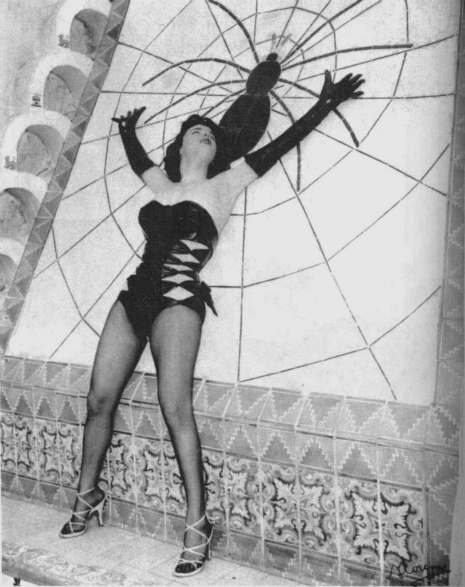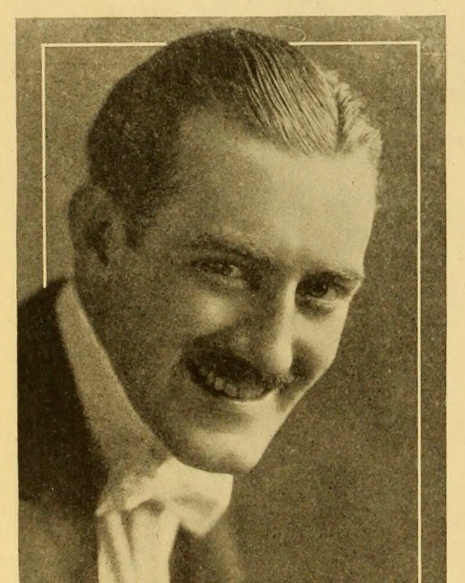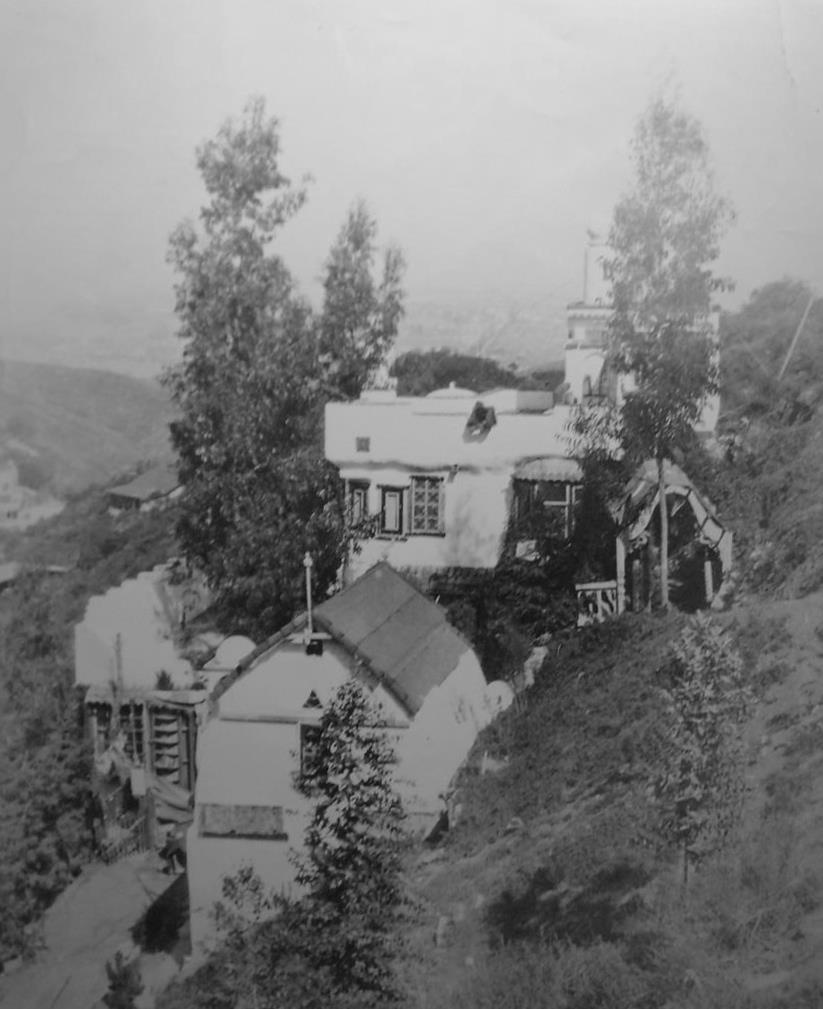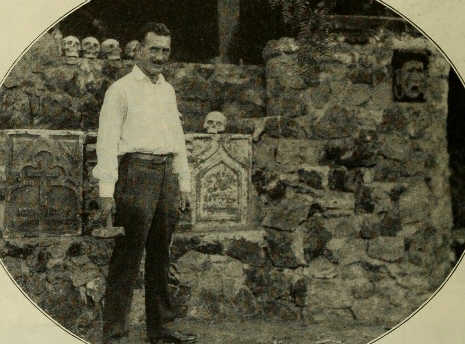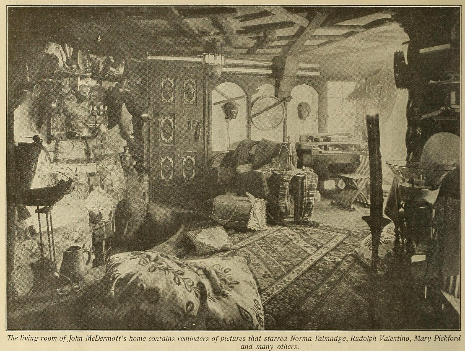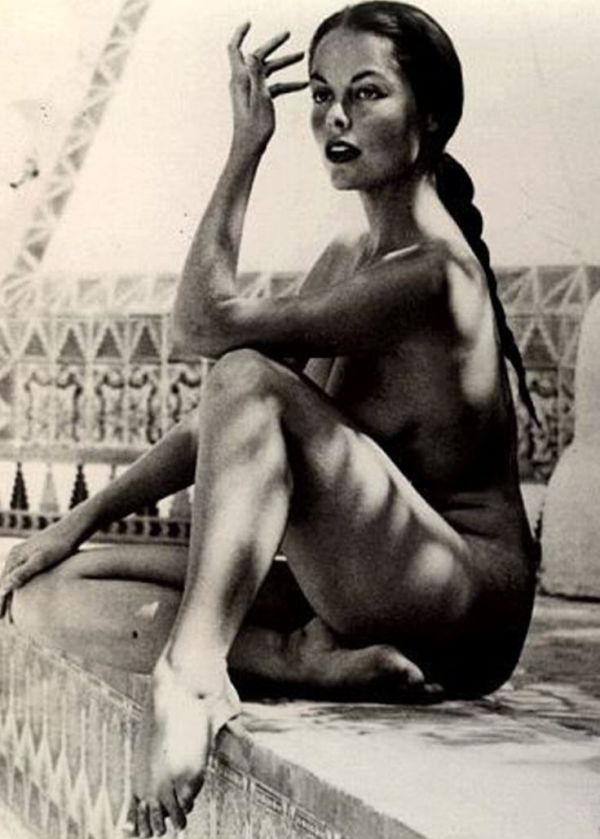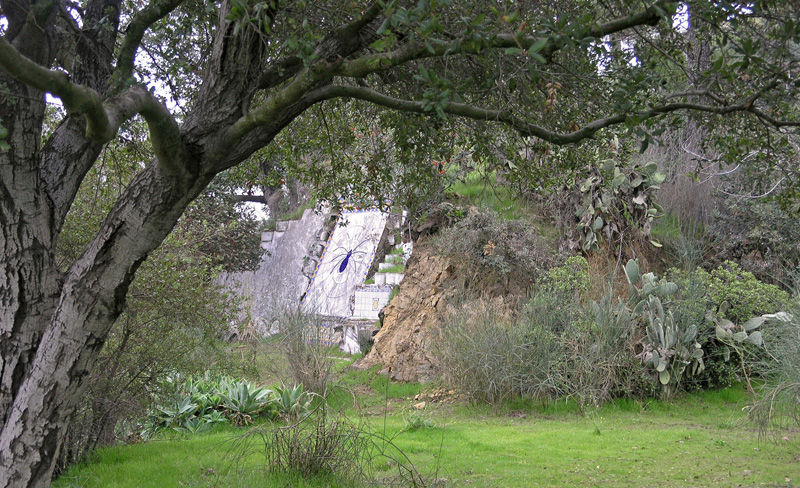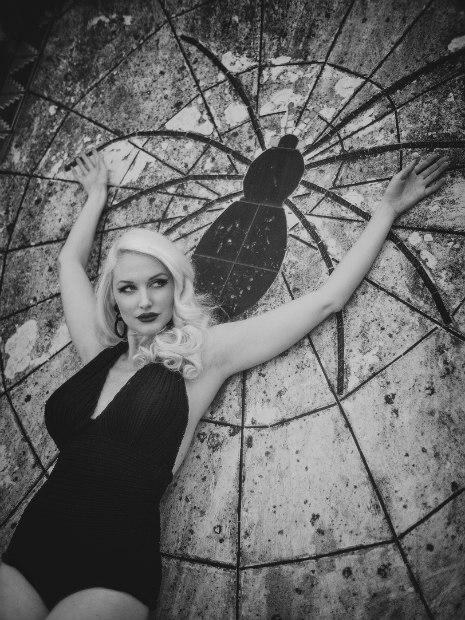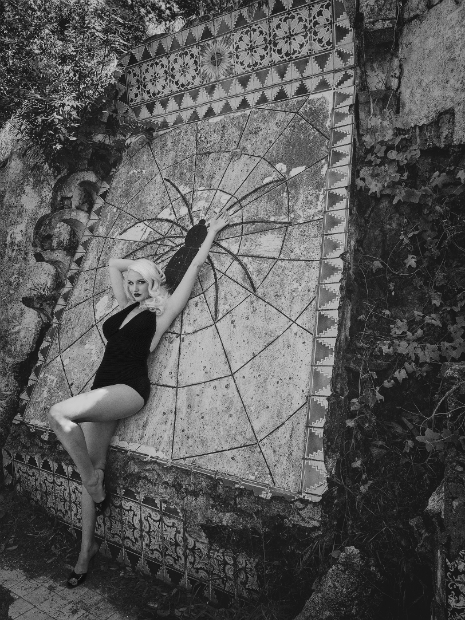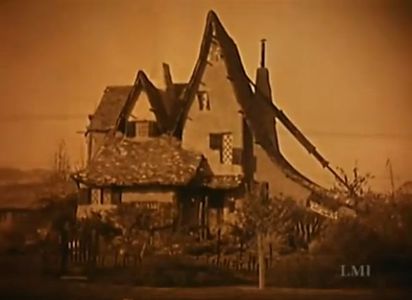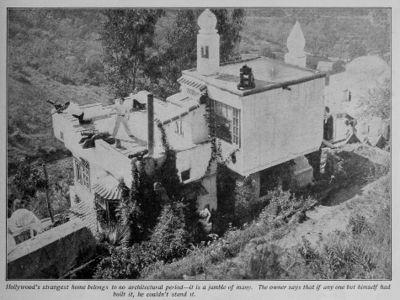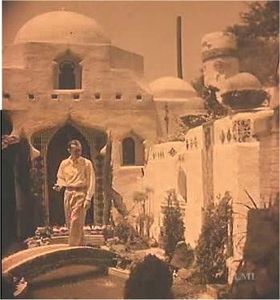The House that Jack Built
The House that Jack Built
- Of Spiders, Pin-up girls and Silent Movie Mad Men
- The Legacy of "Hollywood Imp" Jack McDermott
See also [ The House that Jack Built - 02 ]
There is something so delightfully decadent and downright pagan about Hollywood in the 1920’s. Maybe it was the heat and the transformation of desert wasteland to an arena of dreams and star making machines or perhaps the country’s overall shedding of prudish Victoriana morals and decor. Social and creative mores were pushed, at times, in the most delicious and evocative of ways. (As anyone who has studied pre-Hays Code films can probably assure you!) Sitting in the Hollywood Hills, like some pastiche Abbey of Thelema meets Silver Screen ambiance was the "Crazy House."
"Crazy House" belonged to silent film writer/director Jack McDermott. McDermott was born in 1893 and originally from Green River, Wyoming, a mining town known for being one of the first in the country to ban door-to-door solicitation. When his family moved to Los Angeles in the protean days of filmmaking, it was kismet for an unrestrained soul like McDermott’s. Settling in the desert landscape like a holy burning bush as witnessed by a tribe of mescaline-dosed fops, McDermott’s reputation would soon grow legion. With directing credits dating back to at least 1916 and the last credited film of his being released in 1926, intriguingly titled The Love Thief, McDermott’s legacy in Hollywood mythos has become less solidified in silver nitrate and more in surreal antics and architectural wonderment.
Stories about McDermott the Hollywood Imp would soon circulate by the 1920’s. Gags such as giving guests a ride in his Model T in some of the rockier parts of the landscape, only to pull the steering wheel completely off and throw it out whenever his company started getting nervous, were just the tip of the iceberg. (McDermott’s car had foot controls installed that helped prevent certain auto-crash doom.) Driving shenanigans aside, it would ultimately be, as described in a 1927 issue of Picture-Play magazine as "The Strangest House in Hollywood," that would make him a whispered name decades past his expiration date on this mortal plane.
Described by McDermott himself as his "crazy house," what the structure lacked in modern cohesive design, it more than made up for with slackful ingenuity and a mega-ton of studio sets and props. Not just a few odds and ends here and there, but that the house itself was largely composed of set-pieces and what would now be viewed as Hollywood artifacts and relics. The "Crazy House" featured rugs, furniture and walls straight off the sets of films like the 1924 Raoul Walsh actioner "The Thief of Baghdad", a roof constructed from Lon Chaney Sr.‘s classic "Phantom of the Opera", fencing from one of Rudolph Valentino’s last films, 1925’s "The Eagle", among many others. McDermott even reportedly utilized the tombstones used in the 1923 version of "The Hunchback of Notre Dame" to form part of a stone wall on the property.
As you would enter the house, you would be descending into a realm full of secret passageways, sliding panels and even a tunnel guests would have to go through to simply enter the living room via a manhole. Speaking of the living room, looking up you might notice that the chandelier is a bit….unusual looking? That’s because it is not a chandelier at all but instead an inverted baptismal font that McDermott himself absconded from a church going through some re-construction. Not surreal enough for you? There’s a whole room where all of the furniture was nailed to the ceiling. Its main purpose was to serve as an un-sanctuary for any party guests who had imbibed a little too much bootleg liquor. The room was even complete with peep holes for the more fortunate ones to peek and get a mean-spirited giggle out of the highly disoriented lost, hung over souls. In a borderline Subgenius move, McDermott even had the handle to the main toilet connected to his fire alarm, undoubtedly scaring the bejeesuz out of both the bathroom user and any nearby new guests.
It’s not hard to believe that for a moment in time, Jack McDermott’s Crazy House was party central, with its funhouse Dada and tales of specialty bathing suits for female guests that would immediately disintegrate in the water. But bizarrely enough, that would not be the crown jewel of the estate. Like any proper West Coast castle, it’s all about the pool and Jack McDermott created the pool of pools to match his crazy house.
Built reportedly from expensive tile samples via Italy and France, thanks to McDermott posing as an LA-based tile dealer (!), his pool featured a vibrant mosaic with the centerpiece being a spider in its webbed home. It was this mosaic that must have seared its way into many a visitor’s head. It was also this same arachnid art that outlived McDermott himself, who passed away at the young age of 52 in 1946 and even the house itself, which suffered a major fire in 1947. While the silent film funhouse that McDermott had worked so hard to construct was long gone, the pool and its spider steadfastly remained.
In a twist that perhaps McDermott himself could not have foreseen, his pool and its spider mosaic in particular, would go on to have a new life thanks to an assortment of camera club enthusiasts, as well as professional pin-up photographers. Even a legend from McDermott’s film era, in the form of silent film comedian Harold Lloyd, who took a number of pin-up style photos by the spider, including one of a pre-Faster Pussycat Kill! Kill! Tura Satana. (Several of Lloyd’s pin-up work would years later be published in the tome, Harold Lloyd's Hollywood Nudes in 3D!"
Other famous nude and pin-up models would get to work their buxotic magic in front of McDermott’s spider tile, including Diane Webber and one of the best burlesque queens ever, Dixie Evans. However, once the seemingly-now tame era of cheesecake started to segue into an era of more explicit sexuality, both the rosy-cheeked coy nudies and the striking landscape behind them, faded into dust. Until recently.
A Dutch-Indonesian photographer by the name of Tom Stratton, born 26 years after McDermott’s passing, had found out about the legend of the spider mosaic via a friend and an artistic obsession began. Most would be happy to go on the treasure map hunt and simply find the old loot, but in a nod to his pulchritude-picture-taking-predecessors of the past, Stratton has created some incredibly striking pin-up shots of his own that could have been found right out of an abandoned film lab. Most impressive given that the pool’s address is not readily known and is basically landlocked by several private properties.
But this is not just a tale of fun art and sexy women in front of one admittedly beautifully tiled spider. No, this is a tale of a man who was so defiantly, so beautifully weird in an era that was desperately trying to rebel against its old ways and forge an identity, that he built an entire home and lifestyle damning the torpedoes and sending them into a stratosphere that went past Hell and entered firmly into a joyously demented wonderland of manic weirdness and Theatre of Cruelty splendor. Jack McDermott may be a mere footnote for silent film enthusiasts but his legend in the landscape of all that was truly strange, beautiful and eternally unmatched lives on in a desolate and decayed section of the Hollywood Hills. The best treasures are often the ones seemingly forgotten and covered in rust.
On Jack McDermott’s tombstone, it simply says "a genius" and really, doesn’t that say it all? Life’s too short for anything else.
It seems that Jack McDermott, an eccentric silent film director in the 1920s, had built a mansion out of props and movie sets in the Hollywood hills.
The house featured a tunnel and shaft entryway which led into the center of the living room. A manhole cover was the 'door'. There was a photo of McDermott's girlfriend on the wall, framed in a toilet seat. In the bathroom, the handle to flush the toilet was hooked up to a loud alarm. On the outside of the house were 'mosque-like' minarets and cannons from the movie "The Sea Hawk" sat on the roof, aimed out toward Hollywood.
The house had underground passages, trap doors, and an upside-down room. The rugs and furniture were attached to the ceiling while a chandelier sat in the middle of the floor. McDermott would watch through a peephole as his passed out from partying guests would wake up in the crazy room.
He posed as a tile dealer in order to have expensive Italian tile samples sent to him. With those, he built a pool and a mosaic wall that featured a big spider in it's web. Jack had lavish parties where he would spy on his guests through hidden rooms and secret passageways. He would offer the girls bathing suits so that they could go swimming... Disintegrating bathing suits!
In 1947, the house burned down. But this is where things get interesting... All kinds of pinup/ nude/ cheesecake photoshoots began happening there, at the pool and in front of the spider mosaic. Burlesque and B-movie starlets like Dixie Evans and Tura Satana have photos at the pool.
See also [ Spider Pool ]
Chat rooms • What links here • Copyright info • Contact information • Category:Root
